Groundnut farming is also known as Peanuts, scientifically known as Arachis hypogaea L. It is an herbaceous plant belonging to the Fabaceae family. Groundnut farming is a rewarding agricultural practice that involves the growth of Groundnuts for commercial or personal use.
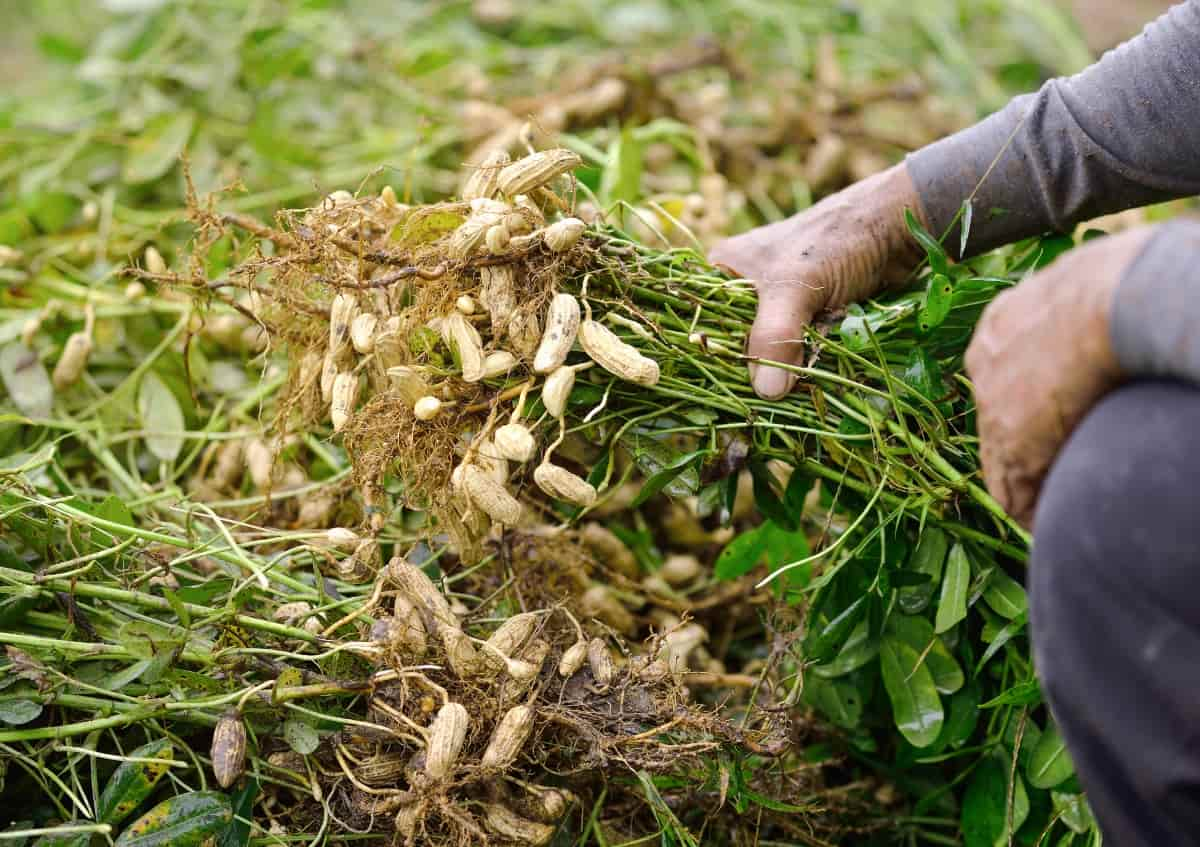
Varieties of Groundnuts
The main Groundnut varieties produced are Kadiri-2, Chandra, Chitra, Kadiri-3, BG-1, BG-2, Kuber, GAUG-1, GAUG-10, PG-1, T-28, T-64, Kaushal, Parkash, Amber, etc. Understanding the specific needs of each Groundnut variety will help you optimize yield and quality come harvest time. Whether you’re looking for high yields or specific traits like early maturity or drought tolerance, exploring different Groundnut varieties can help you tailor your cultivation approach to maximize productivity while minimizing risks.
Farmers typically choose Groundnut varieties based on factors such as soil type, climate, pest and disease pressure, market demand, and their farming practices and preferences. Farmers need to select varieties that are well-suited to their specific conditions and requirements to maximize yields and profitability.
Soil Requirements and Preparation
Groundnut thrives best in well-drained sandy loam or sandy soils. These soils should have good water-holding capacity to prevent waterlogging. The ideal pH level for Groundnut is between 6.0 and 7.0. Soil pH outside this level can affect nutrient availability to the plant. Ensure the soil is free from debris before planting that may hinder growth. Ploughing and tilling the land thoroughly will help loosen the soil and promote better root development for the Groundnut plants.
In case you missed it: Groundnut Cultivation Income (Peanut), Cost, Yield
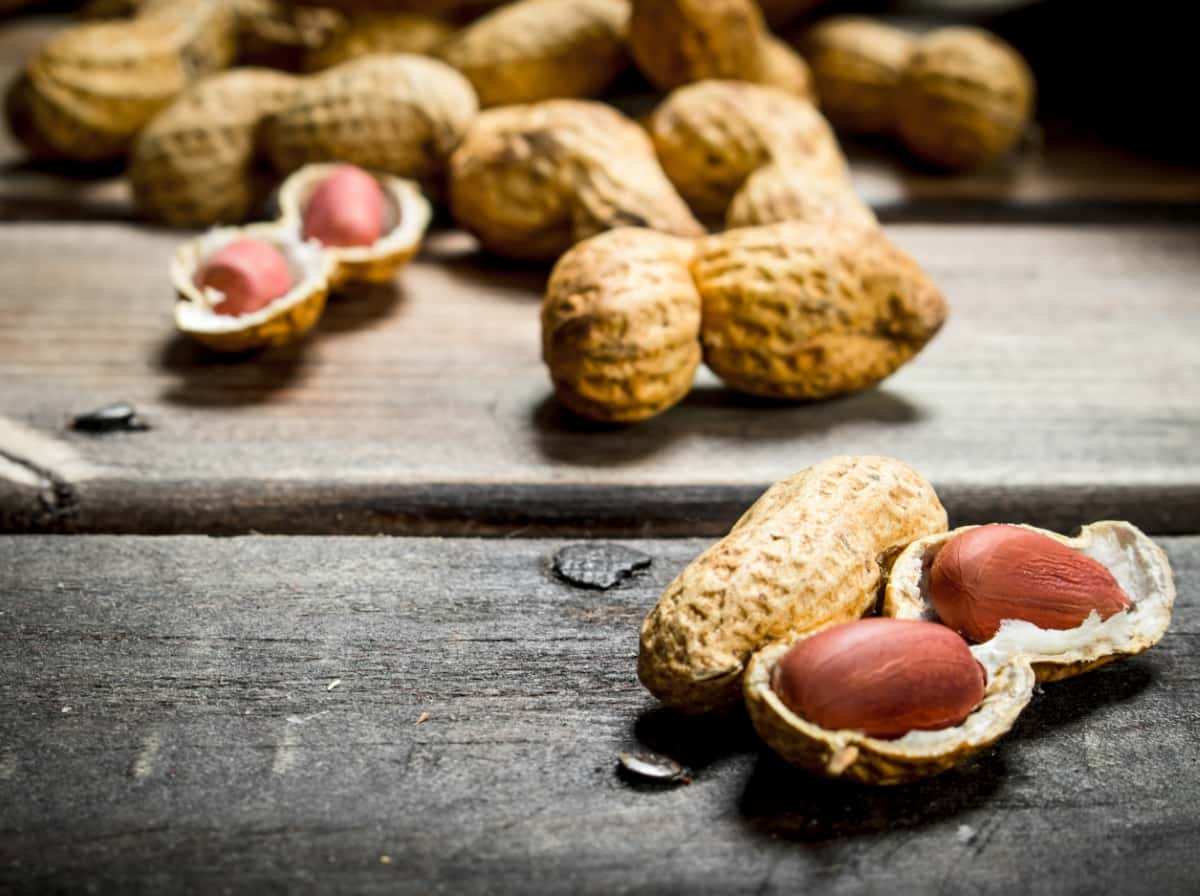
Adding organic matter can provide essential nutrients for healthy plant growth. It’s important to conduct a soil test beforehand to determine any deficiencies and adjust accordingly with fertilizers. Properly preparing the soil sets a solid foundation for your Groundnut crop, ensuring optimal conditions for germination and overall plant health throughout its growth cycle.
Climate Conditions
Groundnuts thrive in warm climates with temperatures ranging between 20°C to 30°C. They require ample sunlight for optimal growth and development. It’s essential to select a location with well-drained soil to prevent waterlogging, which can be detrimental to the crop. Groundnuts also prefer moderate rainfall during the growing season, ideally between 500 mm to 800 mm annually.
Planting should be timed according to the climate conditions of the region. Sowing should typically take place after the last frost date when soil temperatures are consistently above 18°C. In regions with unpredictable weather patterns, farmers may need to implement irrigation systems during dry spells to ensure proper moisture levels for the Groundnut plants.
Planting Techniques for Groundnuts
Ensure you choose a high-yielding and disease-resistant type that suits your region’s climate. Before planting, prepare the soil by plowing and leveling it properly. Planting should ideally be done during the dry season when there is enough sunlight. Create furrows about 20-25 cm apart and sow the seeds at a depth of 5 to 7 cm. Make sure to space the seeds around 10 cm apart within the rows.
Cover the seeds with soil gently and water them immediately after planting. Adequate moisture is essential for germination, so ensure regular watering during the initial growth stages. Monitor for pests or disease signs and take necessary actions promptly. During the growing season, monitor moisture levels closely as Groundnuts require regular watering, especially during flowering and pod development stages. Implement crop rotation practices to reduce pest and disease pressure in your fields.
Irrigation Methods for Groundnut Fields
Several methods can be employed to ensure successful cultivation. One common method is furrow irrigation, where water is directed through small channels between the rows of Groundnuts. Drip irrigation is another effective technique, which involves delivering water to the plant roots through a system of pipes and emitters. Sprinkler irrigation is also commonly used in Groundnut farming, where water is sprayed over the crop in a controlled manner.
In case you missed it: Groundnut Seed Germination, Time, Temperature, Process
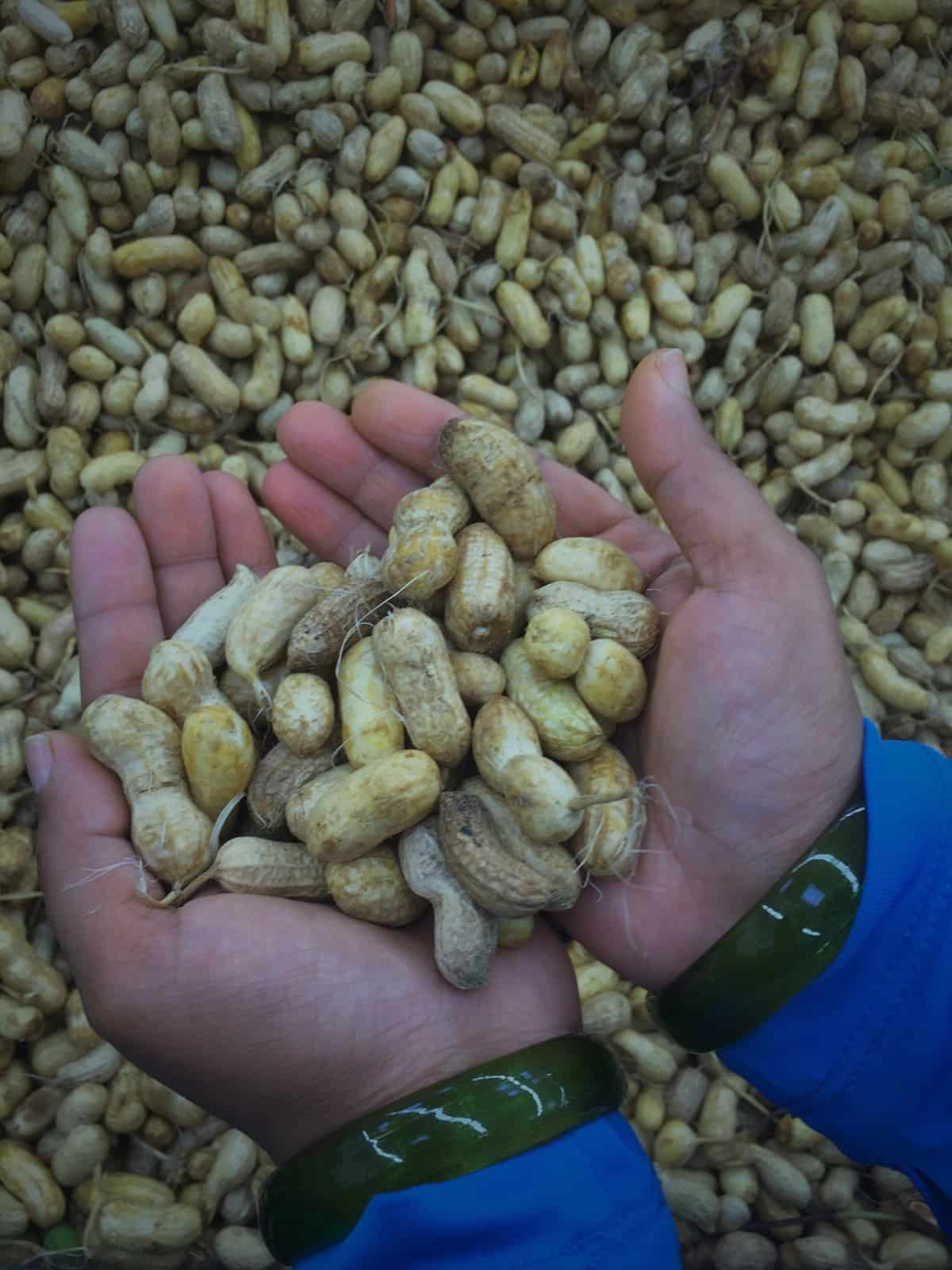
This method helps in ensuring uniform distribution of water across the field. Farmers can also opt for sub-surface drip irrigation; in this method, water is applied below the soil surface through buried tubes. It’s essential to monitor soil moisture levels regularly and adjust irrigation schedules accordingly to meet the specific needs of Groundnut plants throughout their growth stages.
Fertilization and Nutrient Management
Ensuring the right nutrient balance in the soil is essential for optimal plant growth and high yields. Before planting, it’s important to conduct soil tests to determine which nutrients are lacking. Based on the results, a suitable fertilizer program can be implemented. Nitrogen, phosphorus, and potassium are key nutrients required by Groundnut plants throughout their growth stages. Applying organic compost or manure can help improve soil fertility naturally. Additionally, using balanced chemical fertilizers in recommended quantities can supplement any deficiencies.
Proper nutrient management not only promotes healthy plant growth but also enhances disease resistance and improves overall crop quality. Over-fertilization must be avoided as it can lead to environmental pollution and waste resources. Monitoring of nutrient levels regularly in the soil is necessary to adjust fertilization practices accordingly. By adopting effective nutrient management strategies, farmers can maximize their yields while minimizing negative impacts on the environment.
Weed Control Strategies
An effective strategy is practicing timely weeding to remove unwanted plants competing for nutrients, water, and sunlight with Groundnuts. Mulching can help control weed growth by making a barrier between the soil and sunlight, hindering weed germination. Another method is using herbicides selectively to target specific weed species while minimizing harm to Groundnut plants. Hand weeding, in combination with other strategies, can be labor-intensive but effective in removing stubborn weeds that may resist other control methods.
Crop rotation can also aid in controlling weeds by disrupting their lifecycle and reducing their prevalence in the field. By incorporating diverse crops in the rotation cycle, farmers can prevent the buildup of certain weed populations that thrive on monoculture systems.
Pest and Disease Management
Some of the most important pests to watch out for include aphids, thrips, and termites, which can cause harm to the plant leaves and pods. A common disease that affects Groundnuts is leaf spot caused by fungi. This disease can lead to defoliation and reduce photosynthesis in the plant, ultimately affecting its growth and productivity. Diseases like rust and leaf spot also pose a threat to Groundnut crops. Proper irrigation techniques, crop rotation, and the use of disease-resistant Groundnut varieties can help prevent these diseases from spreading.
In case you missed it: Best Fertilizer for Groundnut: Organic, NPK, Compost Manure, and Schedule
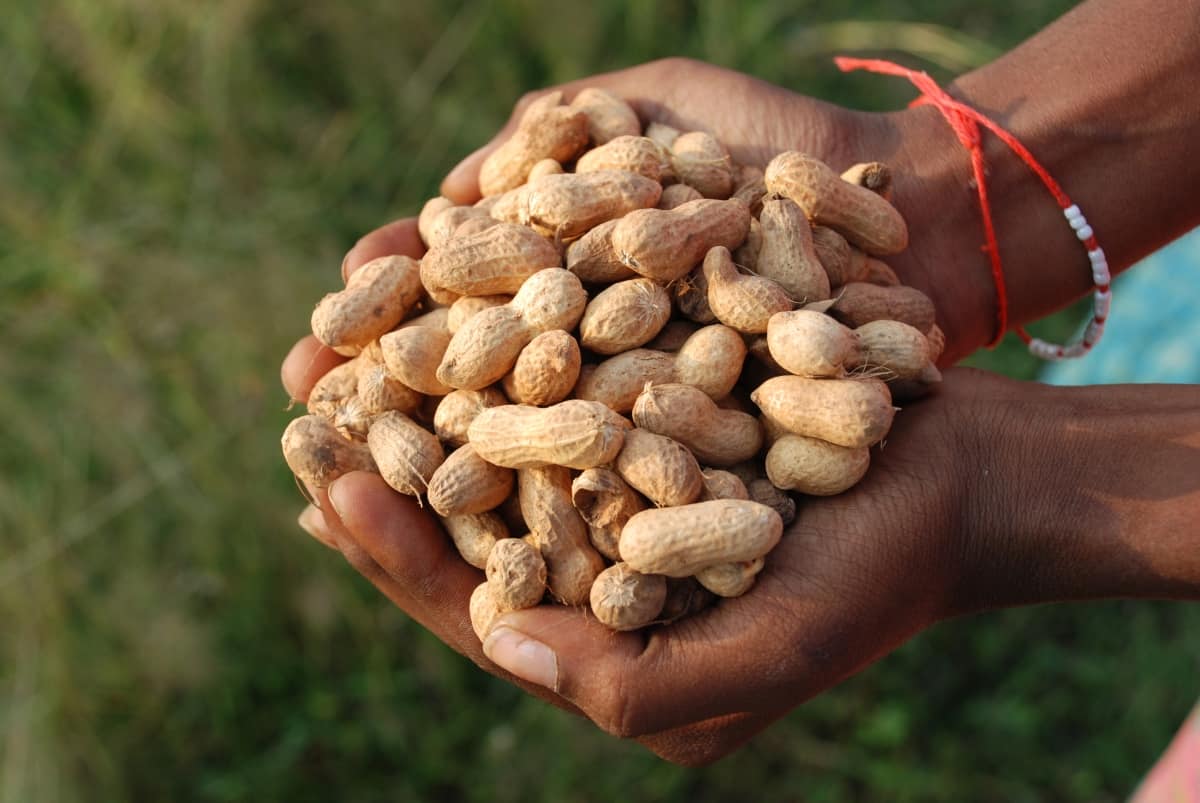
It’s important to stay vigilant and implement effective strategies to protect your plants. Regular monitoring of pests and diseases, along with integrated pest management (IPM) practices, is crucial for the effective control of Groundnut cultivation. Combining cultural, biological, and chemical control methods can help to control the impact of pests and diseases while promoting a healthy crop.
Growth Stages of Groundnut Plants
As Groundnut plants grow, they go through several distinct stages that are crucial for a successful harvest. The first stage is germination, when the seed sprouts and sends out roots into the soil. Next comes the vegetative growth stage, where leaves develop, and the plant grows taller. During this time, it’s important to ensure proper watering and nutrient supply to support healthy growth. Following vegetative growth, the Groundnut plant enters the flowering stage.
Here, delicate yellow flowers appear on the plant, eventually leading to pod formation. Pollination plays a vital role in this process as it determines how many pods will develop on each plant. Once pollination is successful, the pods start to mature, signaling the beginning of the pod development stage. At this point, regular monitoring is essential to determine when the pods are ready for harvesting. Understanding these growth stages can help farmers effectively manage their Groundnut crops for optimal yields.
Harvesting Techniques for Groundnuts
The best time to harvest is when the leaves start turning yellow and drying up. It’s important not to wait too long after this stage, as it can affect the quality of the nuts. To harvest Groundnuts, start by loosening the soil around the plants with a fork or shovel. Carefully pull out the plant from the ground, making sure not to damage the pods in the process.
Once you’ve harvested all your plants, lay them out in a well-ventilated area to dry for about 2-3 days. This helps in curing and preparing them for storage. After drying, please remove any remaining soil or debris from the plants and separate the peanuts from their shells. Store them in a cool, dry place until ready for consumption or sale.
Average Yield of Groundnuts
The average yield can vary depending on factors such as soil quality, climate conditions, and cultivation practices. On average, a well-managed Groundnut farm can produce around 1,500 to 2,500 kilograms of Groundnuts per acre. However, with proper plant care, some farmers have reported yields exceeding this range.
In case you missed it: High-Yielding Groundnut Varieties in India: Hybrid Cultivars for Increased Profits
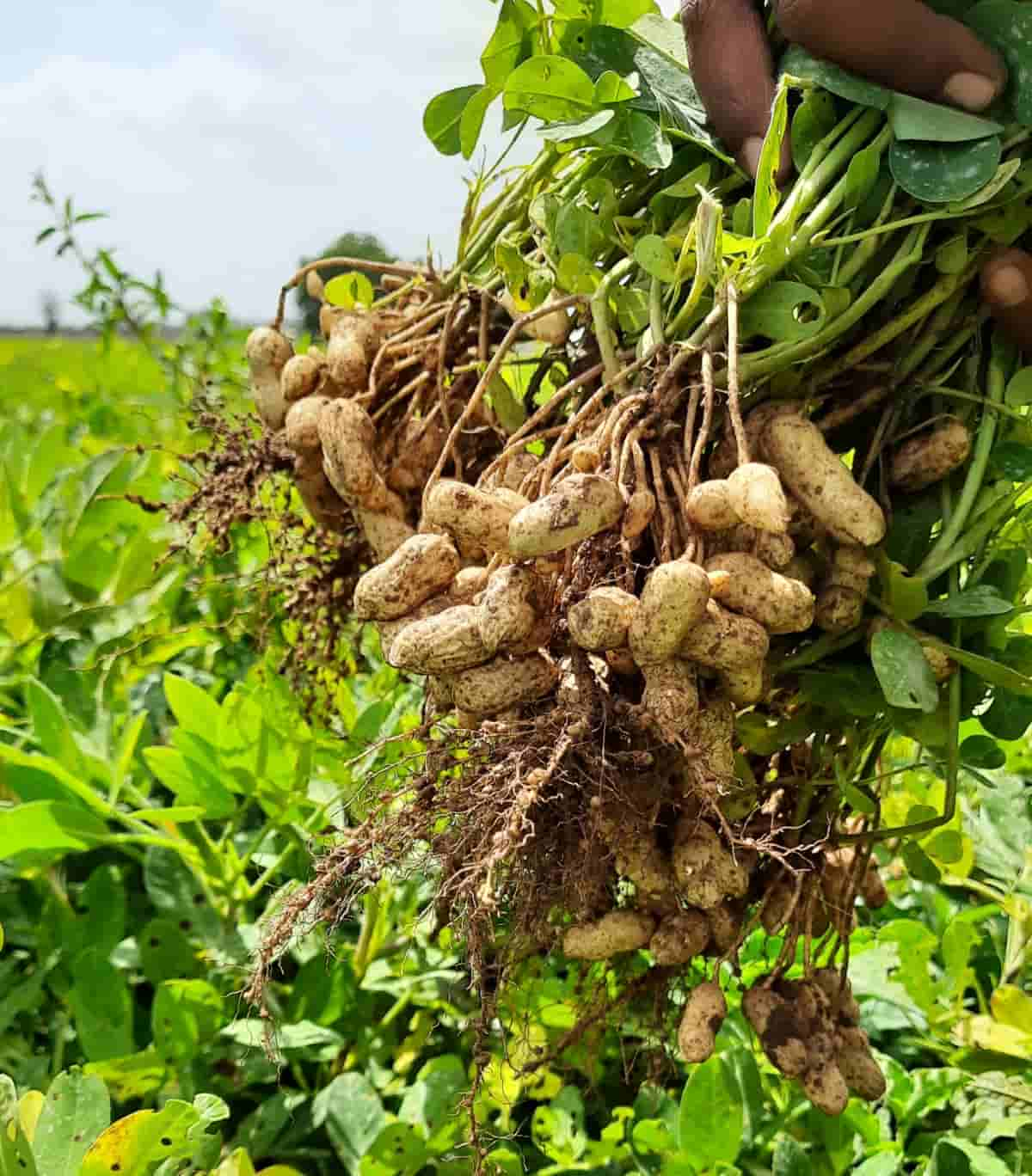
Factors like timely irrigation, nutrient management, and weed control strategies play a significant role in determining the final yield of Groundnuts. Farmers who follow best practices throughout the cultivation process are more likely to achieve higher yields and maximize their profits. Farmers need to keep track of their crop’s progress and make changes for a successful harvest.
Marketing Strategies
The effective approach is to establish relationships with local retailers, wholesalers, and food processors who may be interested in purchasing your harvest. Networking within the agricultural community can also lead to valuable partnerships and sales opportunities. Determine the specific market segments you want to target with your Groundnuts. This could include consumers, wholesalers, retailers, or processors.
Utilizing online platforms such as social media, e-commerce websites, or farmer’s markets can help broaden your reach beyond traditional avenues. Creating a brand identity and promoting the nutritional benefits of Groundnuts can attract health-conscious consumers looking for quality products. Monitor market trends, consumer preferences, and competitor activities continuously to adapt your marketing strategies accordingly. Stay informed about industry developments and be proactive in identifying new growth opportunities.
Cost of Cultivation
The expenses involved in Groundnut cultivation include land preparation, seeds, fertilizers, pesticides, labor, irrigation, and machinery usage. The cost of Groundnut cultivation per acre can change based on factors such as soil quality, climate conditions, pest management practices, and market prices of inputs. On average, the cost ranges from Rs 20,000 to Rs 35,000 per acre
To optimize costs and maximize profits in Groundnut farming, farmers can adopt sustainable practices like integrated pest management techniques and efficient water usage strategies. By implementing these methods effectively, farmers can reduce input costs while maintaining high yields.
Expected Profits
The potential earnings from cultivating Groundnuts can change based on various factors such as the variety grown, yield per acre, market prices, and production costs. The profit per acre for Groundnut cultivation would range from Rs 15,000 to Rs 30,000. Achieving a good profit requires careful planning and attention to detail throughout the cultivation process. From selecting high-quality seeds and preparing the soil for planting to providing adequate water and nutrients during growth stages, every step plays a crucial role in determining the final harvest.
In case you missed it: Pests and Diseases Management in Groundnut (Peanut): Causes, Symptoms, Chemical, and Biological Control
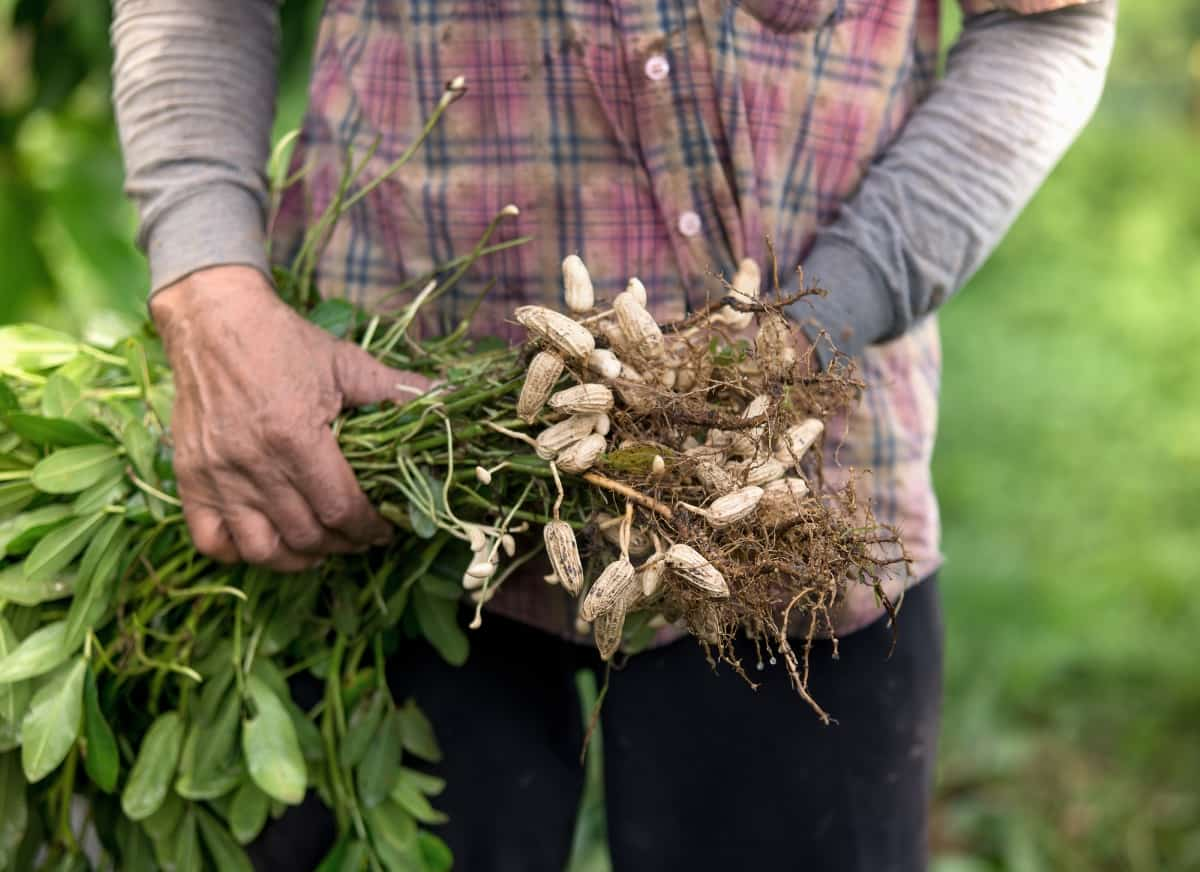
Sustainable Practices in Groundnut Cultivation
Implementing sustainable methods such as crop rotation, organic fertilizers, and integrated pest management not only ensures a healthier environment but also promotes long-term productivity and profitability for farmers. Sustainable practices in Groundnut cultivation play a crucial role in preserving the environment and ensuring long-term productivity. One key method is crop rotation, which helps prevent soil depletion by alternating Groundnuts with other crops to maintain soil fertility.
Another sustainable practice is intercropping, where Groundnuts are grown alongside complementary crops to maximize land use efficiency and biodiversity. This not only increases yield but also reduces the risk of pest infestations. Implementing integrated pest management techniques is essential for minimizing chemical inputs and promoting natural predator-prey interactions to control pests effectively. Additionally, utilizing organic fertilizers and biopesticides can enhance soil health while reducing environmental impact.
Water management through efficient irrigation methods like drip irrigation or rainwater harvesting can conserve water resources and reduce dependency on groundwater sources. Furthermore, Groundnut farming plays a crucial role in food security by providing a good source of protein and essential nutrients to communities worldwide. The high nutritional value of Groundnuts contributes to combating malnutrition and improving public health outcomes globally.
- Economical Aquaculture: A Guide to Low-Budget Fish Farming
- 15 Common Planting Errors That Can Doom Your Fruit Trees
- How to Make Houseplants Bushy: Effective Tips and Ideas
- Innovative Strategies for Boosting Coconut Pollination and Yield
- Pollination Strategies for Maximum Pumpkin Yield
- The Complete Guide to Chicken Fattening: Strategies for Maximum Growth
- Natural Solutions for Tulip Problems: 100% Effective Remedies for Leaf and Bulb-Related Issues
- Revolutionizing Citrus Preservation: Towards a Healthier, Greener Future
- Natural Solutions for Peony Leaf and Flower Problems: 100% Effective Remedies
- Maximizing Profits with Avocado Contract Farming in India: A Comprehensive Guide
- Natural Solutions for Hydrangea Problems: 100% Effective Remedies for Leaf and Flowers
- The Ultimate Guide to Choosing the Perfect Foliage Friend: Bringing Life Indoors
- From Sunlight to Sustainability: 15 Ways to Use Solar Technology in Agriculture
- The Ultimate Guide to Dong Tao Chicken: Exploring from History to Raising
- The Eco-Friendly Makeover: How to Convert Your Unused Swimming Pool into a Fish Pond
- Mastering the Art of Delaware Chicken Farming: Essentials for Healthy Backyard Flocks
- 20 Best Homemade Fertilizers for Money Plant: DIY Recipes and Application Methods
- How to Craft a Comprehensive Free-Range Chicken Farming Business Plan
- Brighten Your Flock: Raising Easter Egger Chickens for Beauty and Bounty
- How to Optimize Your Poultry Egg Farm Business Plan with These Strategies
- Subsidy for Spirulina Cultivation: How Indian Government Schemes Encouraging Spirulina Farmers
- Ultimate Guide to Raising Dominique Chickens: Breeding, Feeding, Egg-Production, and Care
- Mastering the Art of Raising Jersey Giant Chickens: Care, Feeding, and More
- Ultimate Guide to Raising Legbar Chickens: Breeding, Farming Practices, Diet, Egg-Production
- How to Raise Welsummer Chickens: A Comprehensive Guide for Beginners
- How to Protect Indoor Plants in Winter: A Comprehensive Guide
- Ultimate Guide to Grow Bag Gardening: Tips, Tricks, and Planting Ideas for Urban Gardeners
- Guide to Lotus Cultivation: How to Propagate, Plant, Grow, Care, Cost, and Profit
- Agriculture Drone Subsidy Scheme: Government Kisan Subsidy, License, and How to Apply Online
- Ultimate Guide to Raising Araucana Chickens: Breed Profile, Farming Economics, Diet, and Care
- Bringing Hydroponics to Classroom: Importance, Benefits of Learning for School Students
- Ultimate Guide to Raising Polish Chickens: Breed Profile, Farming Economics, Diet, and Care
- Ultimate Guide to Raising Australorp Chickens: Profile, Farming Economics, Egg Production, Diet, and Care
- Silkie Chicken Farming: Raising Practices, Varieties, Egg Production, Diet, and Care
- Sussex Chicken Farming: Raising Practices, Varieties, Egg Production, Diet and Care
- Homemade Feed Formulations for Livestock: Discover Cost-effective Starter to Finisher Feed Recipes
Excellent reader friendly material, self-explanatory, sound and very useful technical information/guidance for an ardent entrepreneur in market oriented farming! Keep it up. James
Thank you very much for your comments. Cheers!.
Can you send me notes on how to grow groundnut crop?
We are not able to understand,we have already provided the information, what else you want?
Hey Dear,
It Is A Very helpful Information You Share With Us.Now I am Trying To Sowing Seeds in My farm.
Thanks,
Brijesh Sakariya
Gujarat (India).
Good to know that, we wish you good luck.
Very useful and detailed information easy to understand. Has helped me through my tropical agriculture course and now thinking of giving up my 13 years career as a nurse in the UK to return home (S L-West Africa) and focus on crop and livestock farming. Thank you so much.
Thanks, Good info.
It would be nice if you specify the major areas of Karnataka where the Ground Nut is main crop….( Yield wise )
Ares where the Ground Nut is grown predominantly in KA.
Really Helpful Page For Me As A Extension Person. Such Knowledge Arranged In Systemic Manner Will Boosts Me To Help And Guide Farming Community. thanks, Sir.
The note was helpful thanks.
How will know when to harvest the plants? What are the signs?
Hi Kindly provide the meaning of TMV
Useful knowledge for me
DEAR SIR ?
I AM LOOKING FOR A PARTNER TO SET UP A PEANUT PRODUCTION FARM IN ALGERIA .
BEST REGARDS
Sir
Namasthe
Nice information for a novice person like me, all these days i was in Medical Device research , now going back to roots , we have our land in Chitoor and just venturing the farming.
Groundnut is going to be my first trail .
Thanks for tips
May your tribe increase , good person like you is there so only Rainfall is there
Regards
Sridhar
Thanks for the information Jagdish. I am an IT guys from a Framer family and starting farming now. Very rarely one can find such a comprehensive information. Keep up the good work
Very detailed guideline, I now got the skills to expand my farm production.Thank you.
Hi i am gulamnabi a DAIRY TECH worked in saudi, now back o home i have 15 acer land now i need to go in farming ,i have decided to do the farming of ground nut will you please guide me?
some information you may need
PLACE .MODASA, DIS ARVALLI ,STATE GUJARAT
LAND. DARK BROUN
THANKS
How much distance between two rows should be taken and how much distance between the two plants. pl tel me
Groundnut crop is 16 days old now
Stem rot ruining my crop what should i do . Haryana
Hi,
I would like to know the difference between Organic peanut farming and traditional peanut farming?
Does Peanut absorb more chemical from fertilizers being underground crop and why? How is it different than cashew or almond?
Very useful and informative article
How long is the maturity period in term of number if days, weeks and month for a groundnut to be mature. Thank you.
Thanks agricfarm for the information provided. I just planted finished planting my groundnut a week and few days ago. They have germinated. When should I apply fertilizer and how ? Pls I need your reply quickly. Thanks.
In March month can we sow groundnut seeds for farming
When are the peanuts harvested and normally processed for export?